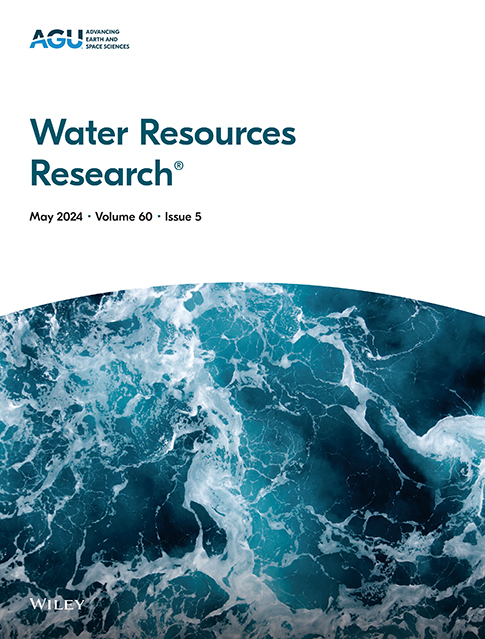Downstream Temperature Effects of Boreal Forest Clearcutting Vary With Riparian Buffer Width
IF 5
1区 地球科学
Q2 ENVIRONMENTAL SCIENCES
引用次数: 0
Abstract
Clearcutting increases temperatures of forest streams, and, in temperate zones, the effects can extend far downstream of the clearcut itself. Here, we studied whether similar patterns are found in colder, boreal zones, and if riparian buffers can prevent stream water from heating up. We recorded temperature at 45 locations across nine streams with varying buffer widths. In these streams, we compared upstream (control) reaches with reaches at clearcuts and up to 150 m immediately downstream of the clearcut. In summer, we found daily maximum water temperature increases at clearcuts up to 4.1°C, with the warmest week ranging from 12.0°C to 18.6°C. We further found that warming was sustained 150 m downstream of clearcuts in three out of six streams with buffers <10 m. Surprisingly, temperature patterns in autumn resembled those in summer, yet, with lower absolute temperatures (maximum warming was 1.9°C in autumn). Clearcuts in boreal forests can indeed warm streams, and, because these temperature effects are propagated downstream, we risk catchment-scale effects and cumulative warming when streams pass through several clearcuts. In this study, riparian buffers wider than 15 m protected against water temperature increases; hence, we call for a general increase of riparian buffer width along small streams in boreal forests.北方森林采伐对下游温度的影响随河岸缓冲区宽度的变化而变化
砍伐森林增加了森林溪流的温度,在温带地区,这种影响可以延伸到砍伐森林本身的下游。在这里,我们研究了是否在寒冷的北方地区发现了类似的模式,以及河岸缓冲是否可以防止水流升温。我们在9条不同缓冲区宽度的河流的45个地点记录了温度。在这些溪流中,我们比较了上游(控制)河段与伐地河段以及伐地下游150米的河段。在夏季,我们发现砍伐区每天的最高水温上升了4.1°C,最温暖的一周在12.0°C到18.6°C之间。我们进一步发现,在6条有缓冲带的河流中,有3条河流在阔叶林下游150米处持续升温。令人惊讶的是,秋季的温度模式与夏季相似,但绝对温度较低(秋季最高升温1.9°C)。北方森林的砍伐确实会使河流变暖,而且,由于这些温度效应会向下游传播,当河流经过几处砍伐地时,我们面临着流域规模效应和累积变暖的风险。在这项研究中,宽度大于15米的河岸缓冲层可以防止水温升高;因此,我们呼吁在北方森林中增加沿小溪的河岸缓冲宽度。
本文章由计算机程序翻译,如有差异,请以英文原文为准。
求助全文
约1分钟内获得全文
求助全文
来源期刊

Water Resources Research
环境科学-湖沼学
CiteScore
8.80
自引率
13.00%
发文量
599
审稿时长
3.5 months
期刊介绍:
Water Resources Research (WRR) is an interdisciplinary journal that focuses on hydrology and water resources. It publishes original research in the natural and social sciences of water. It emphasizes the role of water in the Earth system, including physical, chemical, biological, and ecological processes in water resources research and management, including social, policy, and public health implications. It encompasses observational, experimental, theoretical, analytical, numerical, and data-driven approaches that advance the science of water and its management. Submissions are evaluated for their novelty, accuracy, significance, and broader implications of the findings.
 求助内容:
求助内容: 应助结果提醒方式:
应助结果提醒方式:


